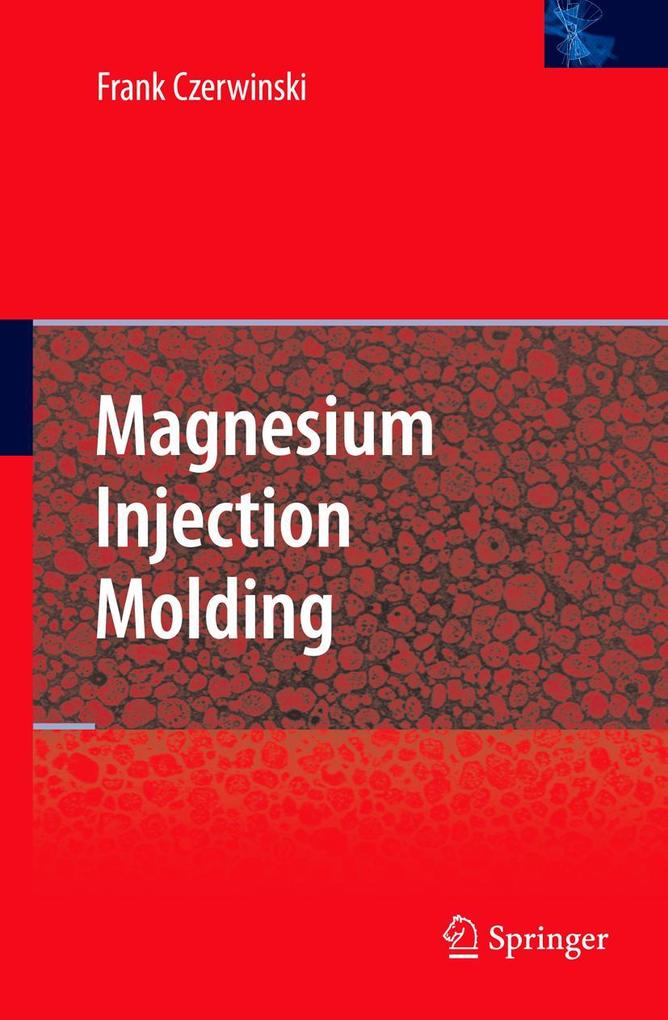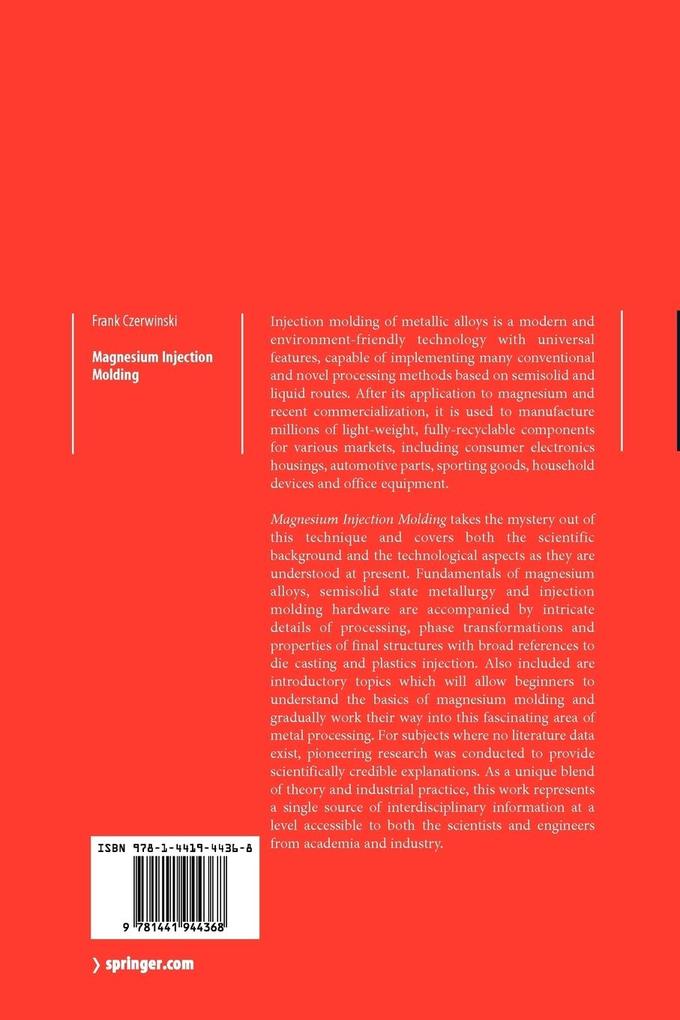
Zustellung: Di, 22.04. - Do, 24.04.
Versand in 2 Tagen
VersandkostenfreiBestellen & in Filiale abholen:
The continuous quest for weight reduction, especially in ground and air transportation, has catalyzed the de velopment of light metals and alloys. In this search, particular attention is being paid to magnesium, used at present in a diversity of applications, each one exploring a specific range of unique properties. As a result, the magnesium consumption by many important market sectors is growing at an impressive rate exceeding 10% per year. In parallel with the alloy development the search continues for new techniques of converting magnesium into useful products in a safe and effective manner. Magnesium injection molding, commercialized in recent years, represents a modern technology that is clean and safe for workers as well as friendly for an environment. Extensive research, conducted at both the industrial and university levels, indicates that the technique exceeded its initial expectations. While combining key features of a number of processing techniques, magnesium injection molding is emerging as a universal technology, capable of implementing many conventional and novel processing routes. The routes are based on both the semisolid slurry and fully molten alloy with tightly controlled temperature. Despite well-advanced practice, the critical breakthrough is still hindered by slow progress in understanding key mechanisms, controlling the process at stages of slurry preparation and component forming.
Inhaltsverzeichnis
Erratum. - Magnesium and Its Alloys. - Semisolid Processing Origin of Magnesium Molding. - Basic and Auxiliary Hardware. - Thermal and Corrosive Aspects of Processing Molten Magnesium. - Process Theory and Practice. - Feedstock Selection. - Oxidation Behavior of the Feedstock. - Melting Behavior of the Feedstock. - Alloy Transformations During Molding. - Microstructure Property Relationship for Molded Alloys. - Semisolid Extrusion Molding. - Near-Liquidus Molding. - Alloy and Composite Generation in a Semisolid State. - Molding Creep-Resistant Alloys.
Produktdetails
Erscheinungsdatum
04. November 2010
Sprache
englisch
Auflage
Softcover reprint of hardcover 1st edition 2008
Seitenanzahl
616
Autor/Autorin
Frank Czerwinski
Verlag/Hersteller
Produktart
kartoniert
Abbildungen
XXII, 592 p.
Gewicht
920 g
Größe (L/B/H)
235/155/33 mm
ISBN
9781441944368
Entdecken Sie mehr
Pressestimmen
Aus den Rezensionen:
"... Das Buch ... bildet das heute verfügbare theoretische und praktische Wissen über diese faszinierende Technik interdisziplinär und umfassend ab. Der Inhalt reicht von den Grundlagen der Magnesiumlegierungen und ihrer Phasenübergänge über die Anforderungen an Spritzgießanlagen bis zu elementaren Prozessdetails und Bauteileigenschaften." (in: Kunststoffe, 2008, Issue.12, S.53)
"... Das Buch ... bildet das heute verfügbare theoretische und praktische Wissen über diese faszinierende Technik interdisziplinär und umfassend ab. Der Inhalt reicht von den Grundlagen der Magnesiumlegierungen und ihrer Phasenübergänge über die Anforderungen an Spritzgießanlagen bis zu elementaren Prozessdetails und Bauteileigenschaften." (in: Kunststoffe, 2008, Issue.12, S.53)
Bewertungen
0 Bewertungen
Es wurden noch keine Bewertungen abgegeben. Schreiben Sie die erste Bewertung zu "Magnesium Injection Molding" und helfen Sie damit anderen bei der Kaufentscheidung.










